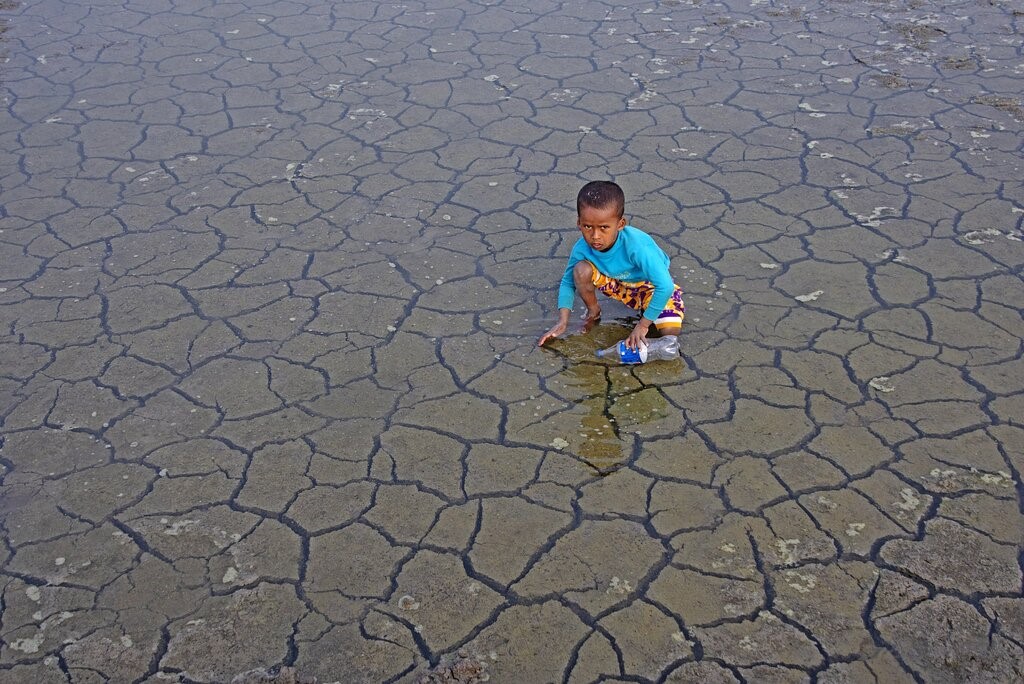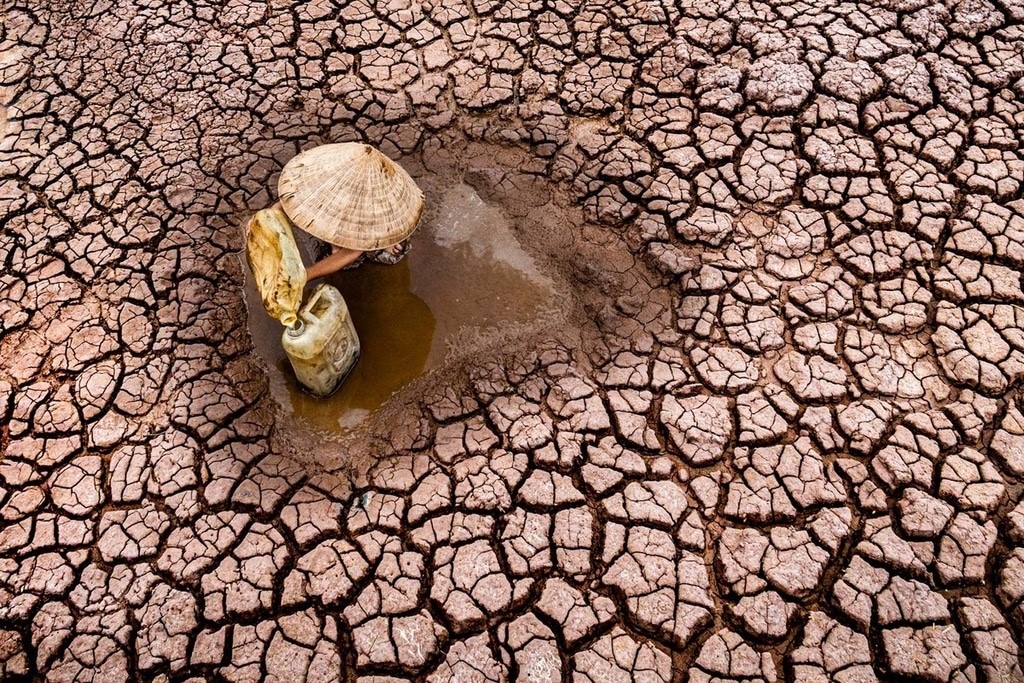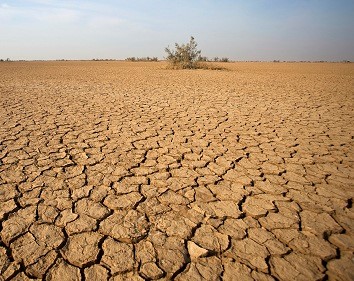The water cycle is part of our everyday lives, but climate change may have dire consequences for everyday water access.

Herder Collecting Water Climate change is already hurting water access for people around the world. Here, a Samburu herder collects water for his flock in Sahara Conservancy, Kenya.
Climate change is already affecting water access for people around the world, causing more severe droughts and floods. Increasing global temperatures are one of the main contributors to this problem. Climate change impacts the water cycle by influencing when, where, and how much precipitation falls. It also leads to more severe weather events over time. Increasing global temperatures cause water to evaporate in larger amounts, which will lead to higher levels of atmospheric water vapor and more frequent, heavy, and intense rains in the coming years.
Climate scientists predict that this shift will lead to more floods since more water will fall than vegetation and soil can absorb. The remaining water, or runoff, drains into nearby waterways, picking up contaminants like fertilizer on the way. Excess runoff eventually travels to larger bodies of water like lakes, estuaries, and the ocean, polluting the water supply and limiting water access for humans and ecosystems.
When fertilizers from farming wash into lakes and the ocean, they promote the rapid growth of algae. These resulting algal blooms clog coasts and waterways with clouds of green, blue-green, red, or brown algae. The blooms block sunlight from reaching underwater life and diminish oxygen levels within the water. Toxins from the blooms can kill off fish and other aquatic animals, make people sick, and even kill humans. These toxins are especially dangerous because they can survive purification processes, making tap water unfit to consume once contaminated. Algal blooms also impact industries that rely on the water for business, and often cause local waterfronts to shut down during blooms. As the climate warms, harmful algal blooms happen more often and become more severe.

As the ocean warms, freshwater glaciers around Earth begin to melt at an unsustainable rate, which results in rising sea levels. The freshwater from the melted glaciers eventually runs into the ocean. With the rising of sea levels, salt water can more easily contaminate underground freshwater-bearing rocks, called aquifers. A process called desalination removes salt from salt water, but it is a last-resort, energy-intensive, costly process for places where there are persistent droughts and freshwater is lacking. The Middle East, North Africa, and the Caribbean use desalination to produce freshwater out of necessity.

In the Northern Hemisphere—where snow, a freshwater source, typically accumulates—warmer temperatures mean less snowfall, which leaves less water available in local reservoirs after winter. This negatively impacts farmers, who are left without enough water to irrigate their crops in the growing season.
There are many things that everyone can do to lessen the impact of climate change. Some measures include growing your own fruits and vegetables or buying locally grown produce, since produce is often transported to grocery stores from far away by trucks, which add more carbon dioxide to the atmosphere. You could also walk or ride a bike instead of driving a car. On a larger scale, industries that are dependent on fossil fuels need to make the switch to renewable, cleaner energy sources to influence our planet for the better.
Vardhman Envirotech
India’s Passionate rainwater company
This article is published on:
https://education.nationalgeographic.org/resource/how-climate-change-impacts-water-access
We would like to spread this for the benefit of fellow Indians.
